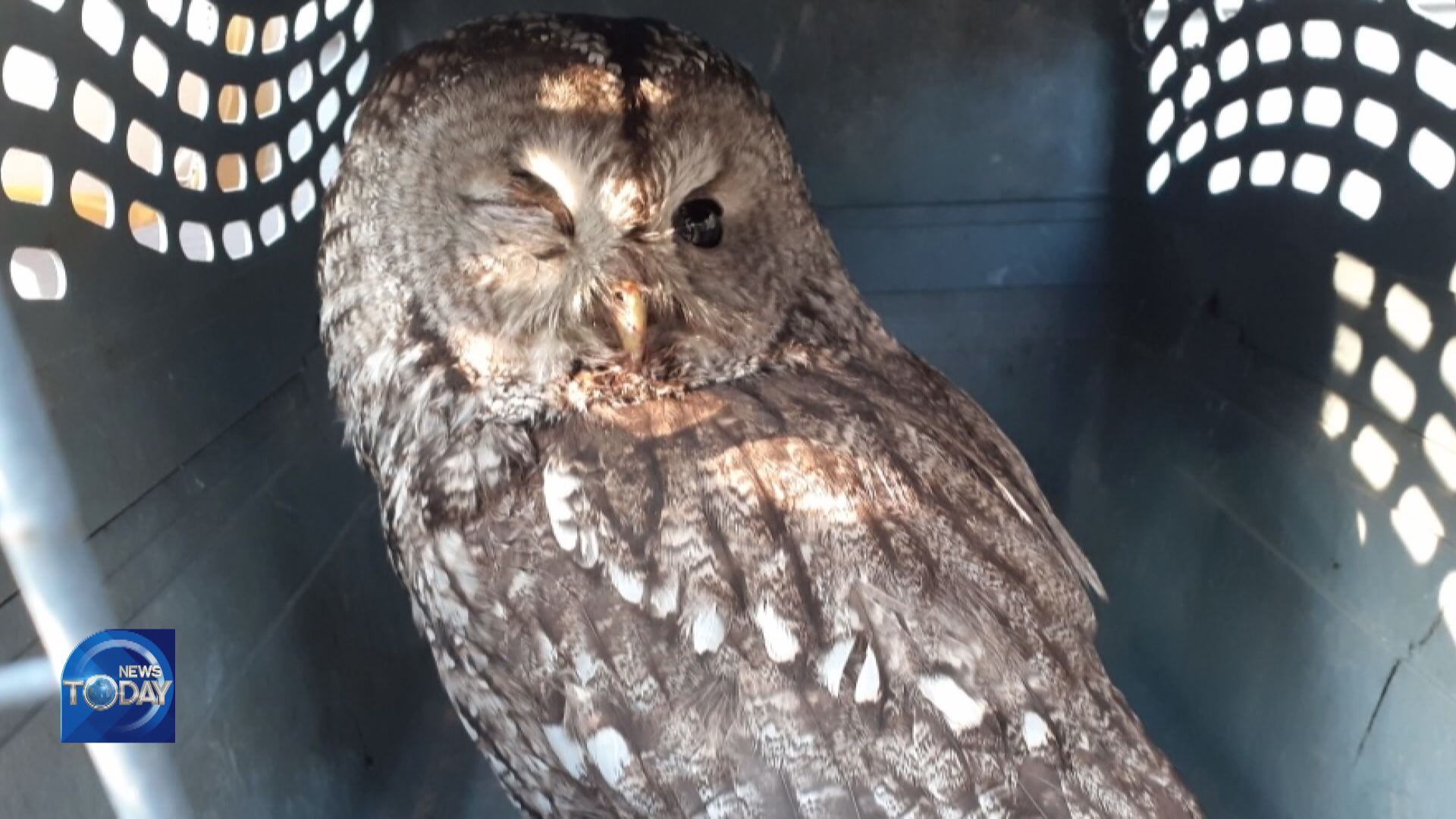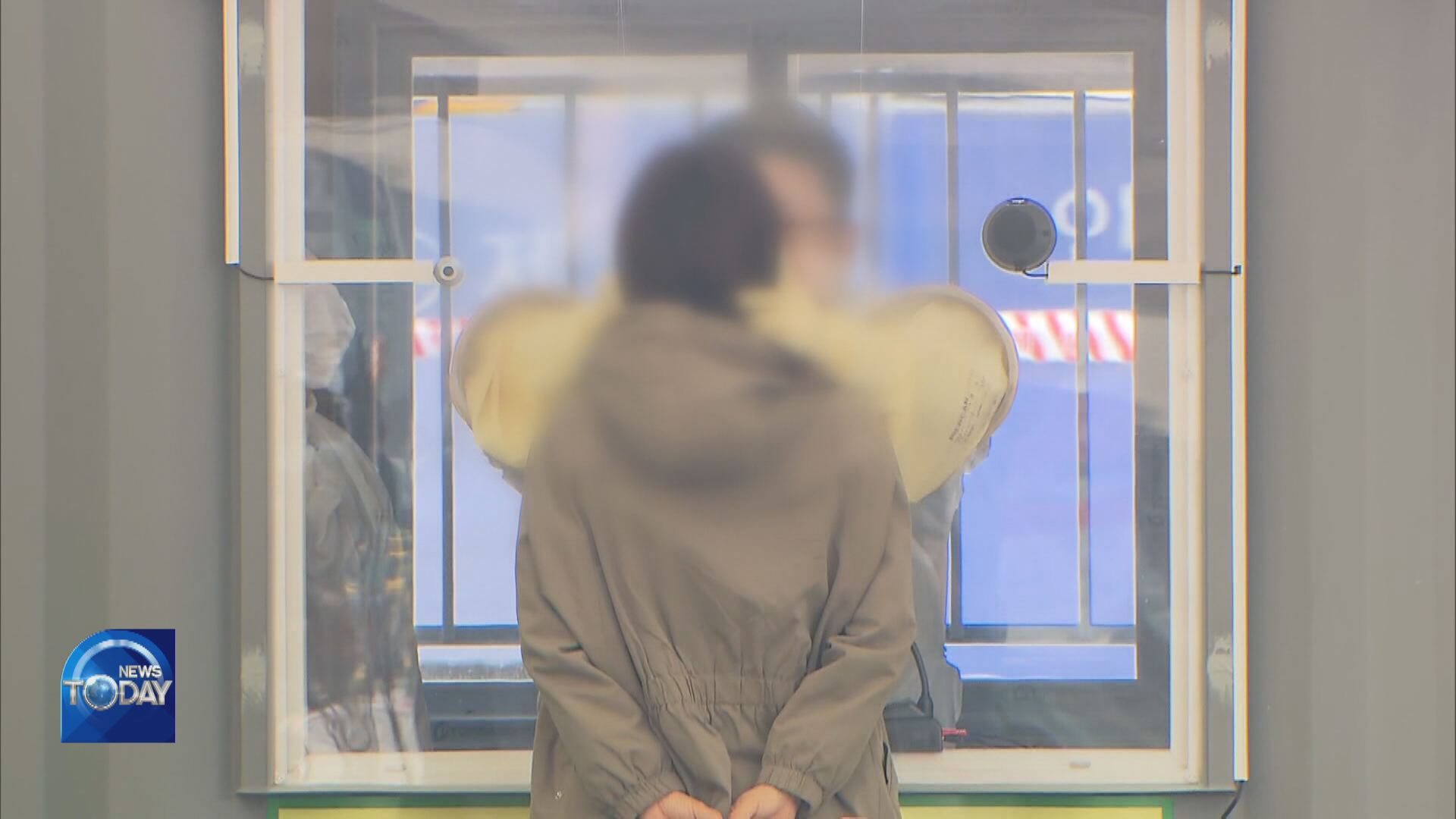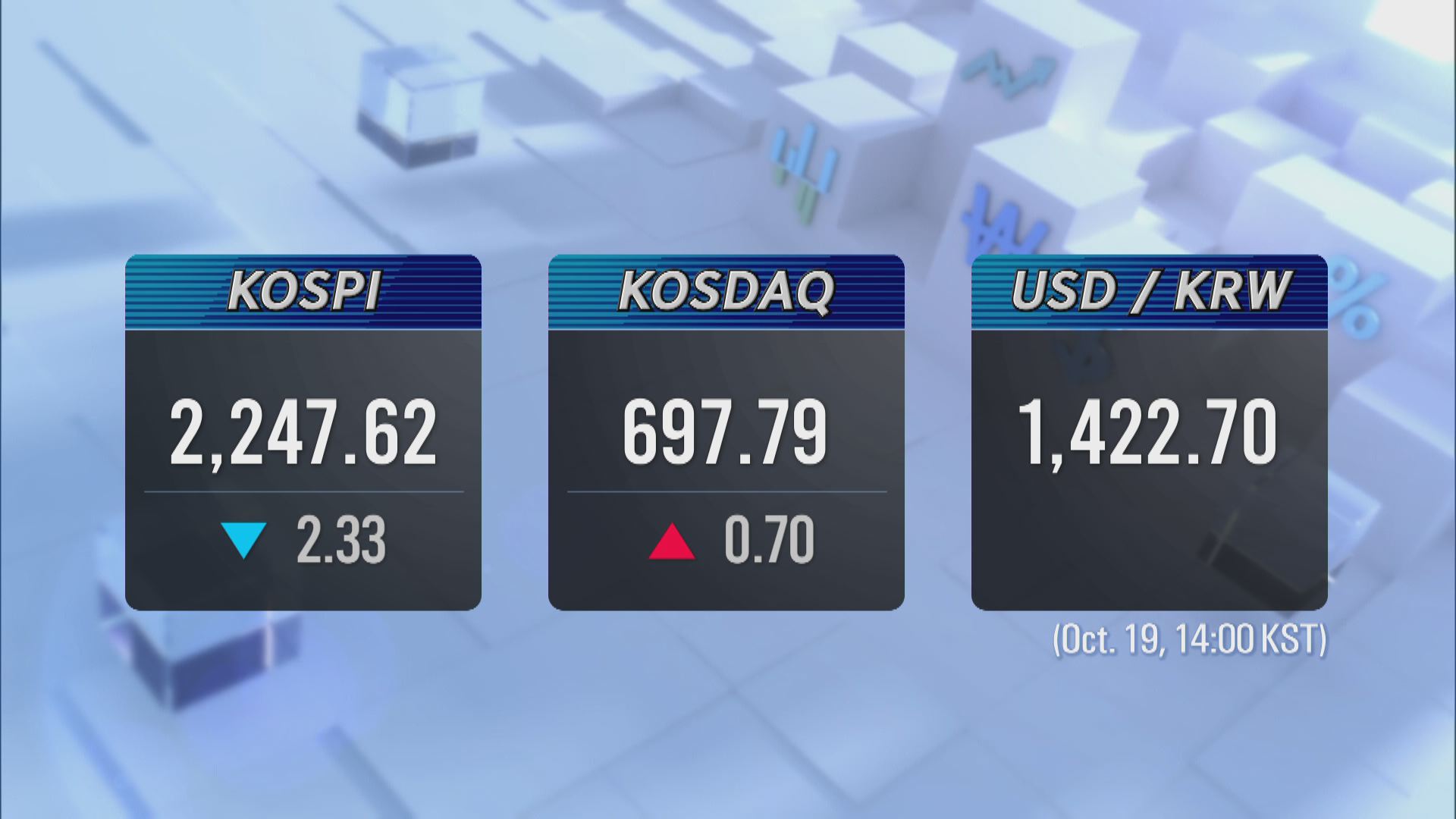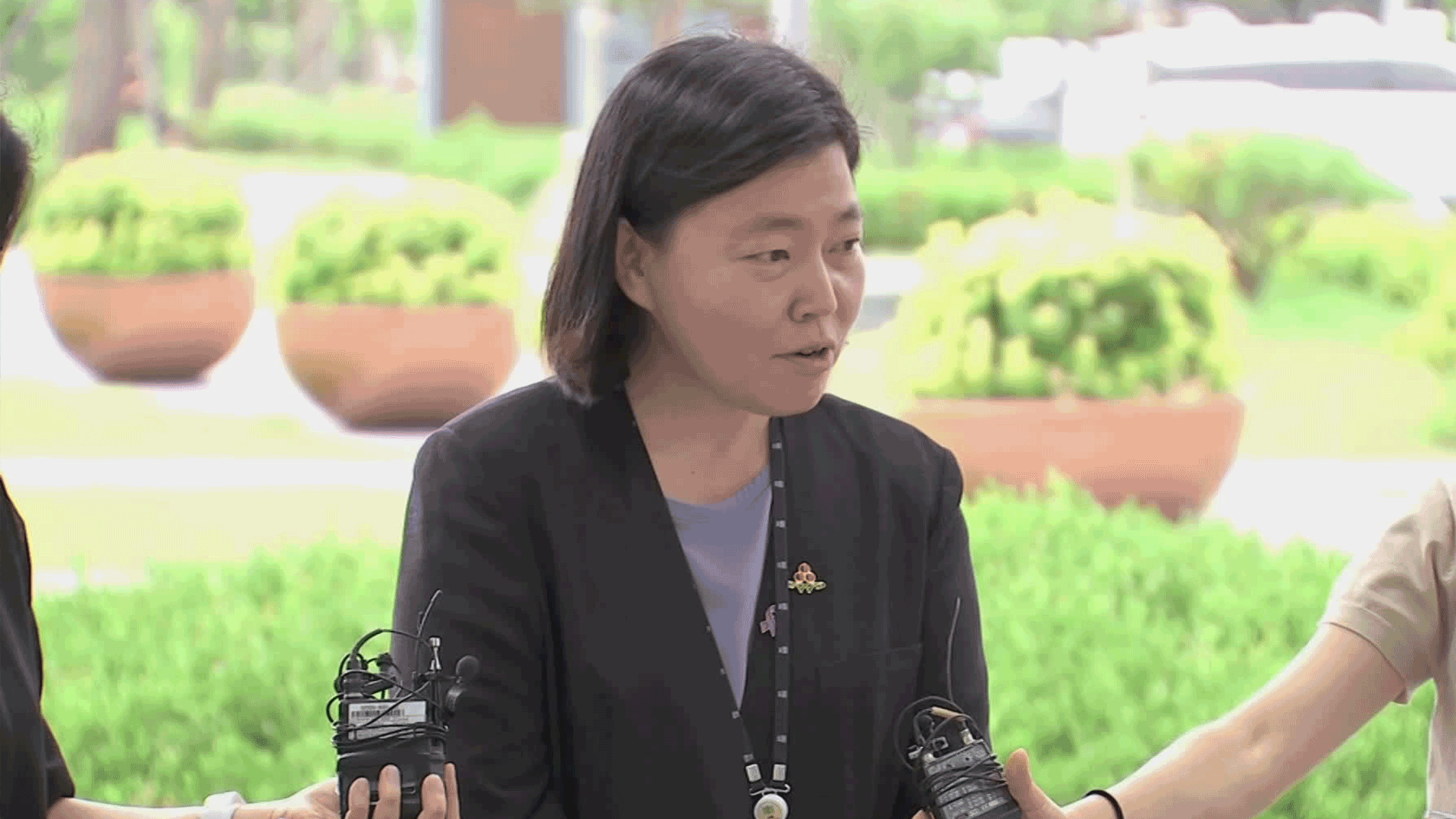ARBORETUMS IN RELEASING WILD ANIMALS
입력 2022.10.19 (15:13)
수정 2022.10.19 (16:44)
읽어주기 기능은 크롬기반의
브라우저에서만 사용하실 수 있습니다.
[Anchor Lead]
Injured wild animals often get rescued and treated. But it's difficult to release them back into the wild immediately due to acclimation issues. One local government has adopted a step-by-step approach in the release of these animals by letting them first stay at an arboretum. This method is also expected to play a positive role in expanding the arboretum's ecosystem.
[Pkg]
This eagle-owl, discovered at a farm in Yeongju, Gyeongsangbuk-do Province in June, is a designated natural monument and a class 2 endangered species. The young bird born less than a year ago came down to a village in search of food but got caught in a net. Locals alerted authorities and the owl was fortunately rescued, but in an utter state of exhaustion. It could barely move its wings. After rehabilitation and regaining health, the owl now flies up the sky. Other birds, such as the kestrel, are also released into the woods. Daegu has discharged 80 rodents and birds of prey, which were earlier rescued and medically treated, to the Daegu Arboretum. Experts believe the arboretum, surrounded by mountains, will serve as a buffer to help the animals gradually adjust in the wild.
[Soundbite] Park Hee-cheon(Avian Ecology Research Center) : "It’s very likely the released animals will build nests, mate and survive in the arboretum’s mountains and forests."
Daegu officials hope the arboretum can provide a nature friendly environment where not only plants but also animals and people can coexist.
[Soundbite] Hong Sung-joo(Daegu Green Environment Center) : "Under this strategy, animals hurt by civilization are treated in a natural environment and released back into nature."
Daegu will continue to survey wildlife habitat conditions as well as how citizens view the issue in an effort to establish effective preservation measures.
Injured wild animals often get rescued and treated. But it's difficult to release them back into the wild immediately due to acclimation issues. One local government has adopted a step-by-step approach in the release of these animals by letting them first stay at an arboretum. This method is also expected to play a positive role in expanding the arboretum's ecosystem.
[Pkg]
This eagle-owl, discovered at a farm in Yeongju, Gyeongsangbuk-do Province in June, is a designated natural monument and a class 2 endangered species. The young bird born less than a year ago came down to a village in search of food but got caught in a net. Locals alerted authorities and the owl was fortunately rescued, but in an utter state of exhaustion. It could barely move its wings. After rehabilitation and regaining health, the owl now flies up the sky. Other birds, such as the kestrel, are also released into the woods. Daegu has discharged 80 rodents and birds of prey, which were earlier rescued and medically treated, to the Daegu Arboretum. Experts believe the arboretum, surrounded by mountains, will serve as a buffer to help the animals gradually adjust in the wild.
[Soundbite] Park Hee-cheon(Avian Ecology Research Center) : "It’s very likely the released animals will build nests, mate and survive in the arboretum’s mountains and forests."
Daegu officials hope the arboretum can provide a nature friendly environment where not only plants but also animals and people can coexist.
[Soundbite] Hong Sung-joo(Daegu Green Environment Center) : "Under this strategy, animals hurt by civilization are treated in a natural environment and released back into nature."
Daegu will continue to survey wildlife habitat conditions as well as how citizens view the issue in an effort to establish effective preservation measures.
■ 제보하기
▷ 카카오톡 : 'KBS제보' 검색, 채널 추가
▷ 전화 : 02-781-1234, 4444
▷ 이메일 : kbs1234@kbs.co.kr
▷ 유튜브, 네이버, 카카오에서도 KBS뉴스를 구독해주세요!
- ARBORETUMS IN RELEASING WILD ANIMALS
-
- 입력 2022-10-19 15:13:38
- 수정2022-10-19 16:44:59

[Anchor Lead]
Injured wild animals often get rescued and treated. But it's difficult to release them back into the wild immediately due to acclimation issues. One local government has adopted a step-by-step approach in the release of these animals by letting them first stay at an arboretum. This method is also expected to play a positive role in expanding the arboretum's ecosystem.
[Pkg]
This eagle-owl, discovered at a farm in Yeongju, Gyeongsangbuk-do Province in June, is a designated natural monument and a class 2 endangered species. The young bird born less than a year ago came down to a village in search of food but got caught in a net. Locals alerted authorities and the owl was fortunately rescued, but in an utter state of exhaustion. It could barely move its wings. After rehabilitation and regaining health, the owl now flies up the sky. Other birds, such as the kestrel, are also released into the woods. Daegu has discharged 80 rodents and birds of prey, which were earlier rescued and medically treated, to the Daegu Arboretum. Experts believe the arboretum, surrounded by mountains, will serve as a buffer to help the animals gradually adjust in the wild.
[Soundbite] Park Hee-cheon(Avian Ecology Research Center) : "It’s very likely the released animals will build nests, mate and survive in the arboretum’s mountains and forests."
Daegu officials hope the arboretum can provide a nature friendly environment where not only plants but also animals and people can coexist.
[Soundbite] Hong Sung-joo(Daegu Green Environment Center) : "Under this strategy, animals hurt by civilization are treated in a natural environment and released back into nature."
Daegu will continue to survey wildlife habitat conditions as well as how citizens view the issue in an effort to establish effective preservation measures.
Injured wild animals often get rescued and treated. But it's difficult to release them back into the wild immediately due to acclimation issues. One local government has adopted a step-by-step approach in the release of these animals by letting them first stay at an arboretum. This method is also expected to play a positive role in expanding the arboretum's ecosystem.
[Pkg]
This eagle-owl, discovered at a farm in Yeongju, Gyeongsangbuk-do Province in June, is a designated natural monument and a class 2 endangered species. The young bird born less than a year ago came down to a village in search of food but got caught in a net. Locals alerted authorities and the owl was fortunately rescued, but in an utter state of exhaustion. It could barely move its wings. After rehabilitation and regaining health, the owl now flies up the sky. Other birds, such as the kestrel, are also released into the woods. Daegu has discharged 80 rodents and birds of prey, which were earlier rescued and medically treated, to the Daegu Arboretum. Experts believe the arboretum, surrounded by mountains, will serve as a buffer to help the animals gradually adjust in the wild.
[Soundbite] Park Hee-cheon(Avian Ecology Research Center) : "It’s very likely the released animals will build nests, mate and survive in the arboretum’s mountains and forests."
Daegu officials hope the arboretum can provide a nature friendly environment where not only plants but also animals and people can coexist.
[Soundbite] Hong Sung-joo(Daegu Green Environment Center) : "Under this strategy, animals hurt by civilization are treated in a natural environment and released back into nature."
Daegu will continue to survey wildlife habitat conditions as well as how citizens view the issue in an effort to establish effective preservation measures.
이 기사가 좋으셨다면
-
좋아요
0
-
응원해요
0
-
후속 원해요
0

















이 기사에 대한 의견을 남겨주세요.